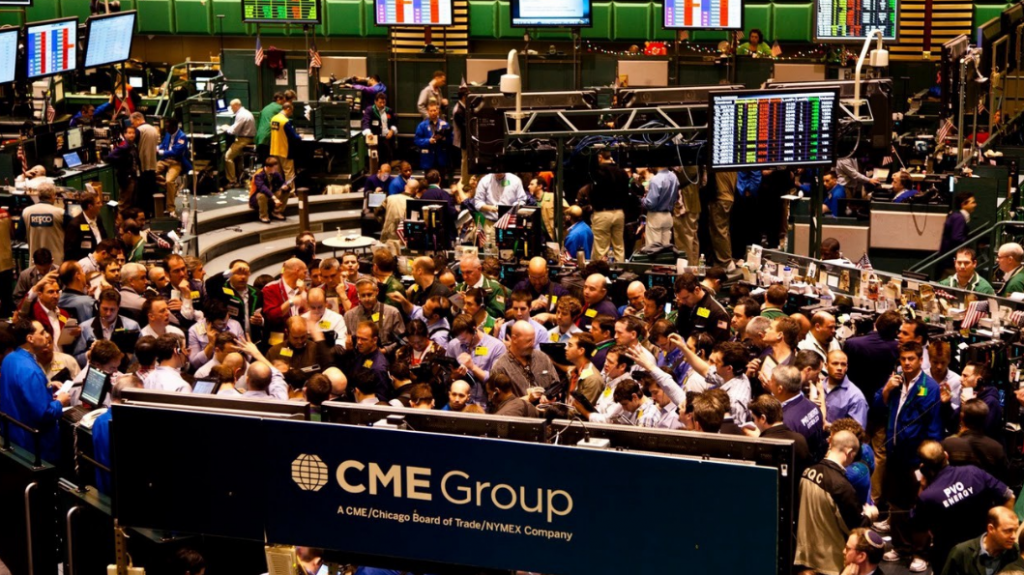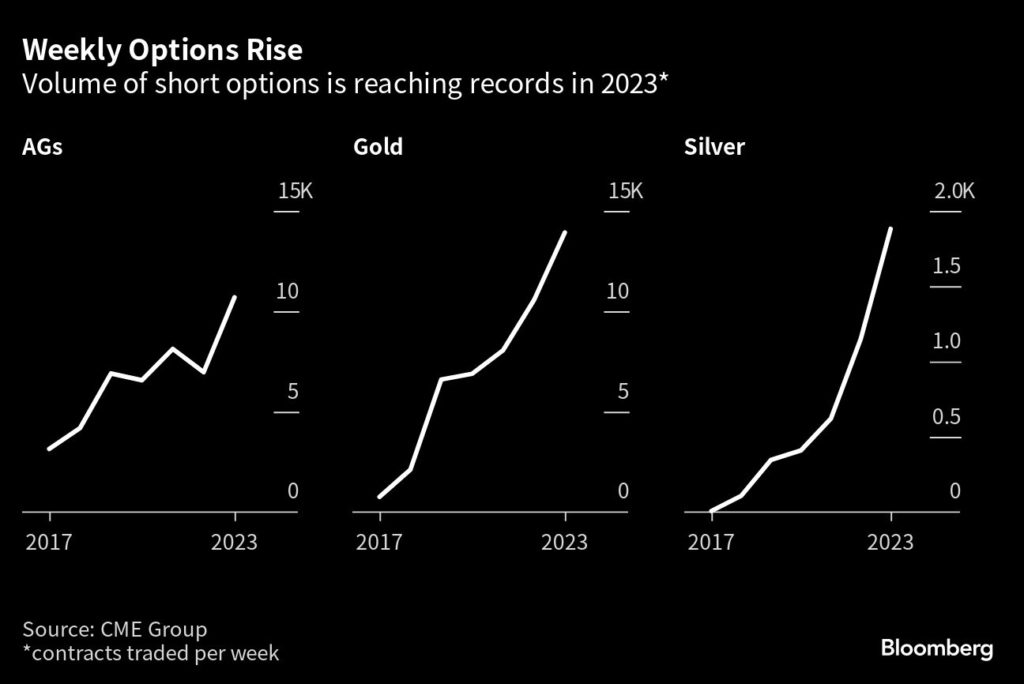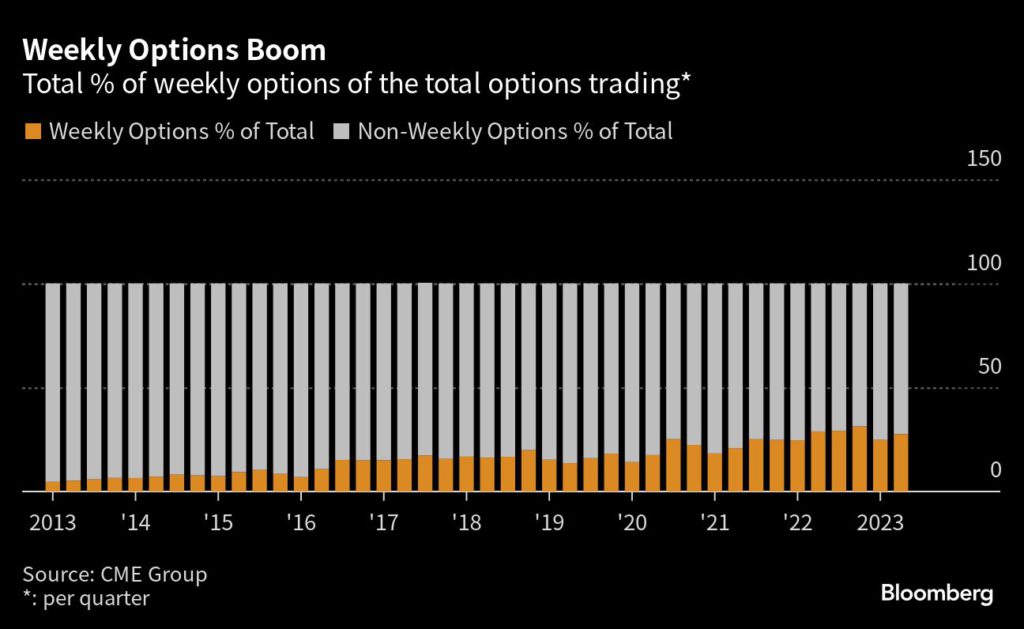The hottest trade in equity options is spreading to commodities

Commodity investors are following a hot trend in equities trading, using short-term options to bet on events from jobs and crop reports to OPEC meetings.
Trading in commodity contracts that expire weekly jumped an average of 30% annually over the past three years, according to data from CME Group Inc., the US’s largest derivatives exchange. Volumes were led by a 50% average increase a year in energy in the 2020 to 2023 period, followed by metals and agriculture.
The growth underscores how traders are managing risk differently as prices for everything from oil to wheat and zinc have become more volatile with markets rattled by extreme weather events, recession fears and the war in Ukraine. Increased odds of wild price fluctuations mean carrying conventional futures contracts have become more expensive while longer-term options may offer insufficient protection.
The shorter-term commodities trading follows the rise in equities of zero-day to expiry options that now account for more than 40% of total volume of contracts tied to the S&P 500 index. While there’s no interest at this point in zero day commodities options, according to the CME, the weekly contracts that allow traders to hedge specific event risks have started to gather steam.
The volume will trend higher around a particular event such as an OPEC meeting, Derek Sammann, global head of commodities, options and international markets at CME, said in an interview. “That’s when you see these big shocks. So when you average that over an entire month, a lot of that weekly activity is going to be scheduled in and around that week.”

Trading in the weekly metal options set five monthly records already in 2023, and energy set records during four months, according to CME data.
With the cost of trading rising along with interest rates and futures requiring bigger margin deposits, traders were forced to change how they manage their books in the face of some wild price swings. Short-dated options provide a cheaper way for investors to be exposed to the markets, as the shorter lifespan reduced the time premium on the contracts.
Weekly options traded in all markets now account for 26% of volumes transacted so far in 2023, up from 18% in 2020, CME data showed. The share of commodities is still small, at just 5% of the total in 2023, but up from 3% in 2020.

Options are becoming a bigger part of clients’ strategies and the segment is growing faster than futures, said Sammann. Trading in all options — including short term and traditional contracts — rose 24% in the first half of 2023 from a year earlier.
“When you look here today, every single one of our client segments is up and the fastest growing part of our client segments our buy side options business is up 42%.”
Options are purpose built for volatile markets, Sammann said. “They are flexible, particularly for hedgers that find flat price hedging using futures to be a difficult task. Customers, once they’re exposed to it and realize the power and the flexibility of these sophisticated tools, say ‘this is now forever part of my portfolio.’”
(By Tarso Veloso and Isis Almeida, with assistance from Devika Krishna Kumar and Joe Deaux)
More News
Sayona-Piedmont merger forms Elevra Lithium with equal board representation
The merger is expected to be completed in mid-2025.
April 10, 2025 | 06:54 am
Codelco logging strong Q2 demand from China, chairman says
April 10, 2025 | 06:50 am
{{ commodity.name }}
{{ post.title }}
{{ post.date }}




Comments